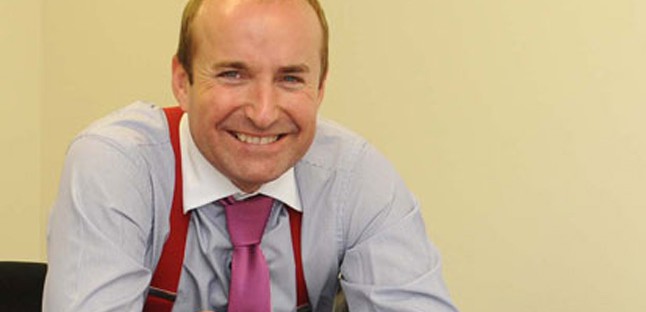Latest posts
A masterclass in creating value
What’s going on at parkrun?
Virtue-signalling all the way to the bank
Bud Light: brand purpose or virtue-signalling?
The Coddling of the American Mind, by Greg Lukianoff and Jonathan Haidt
Belonging, by Owen Eastwood
Such a simple thing
The Long Win, and The Scout Mindset
The Cult of We by Eliot Brown and Maureen Farrell
Coffee and covid modelling
By theme
Marketing strategy
Insight & metrics
Innovation & inspiration
Brand & positioning
Marketing communications
Business purpose
Leadership
By industry sector
Financial services
Retail
FMCG
Technology & start-ups
Consumer services
Business to business
Other sectors
By type
Books
Comment
Quotes
Thought leadership
It’s easy to take a swipe at banks, and tempting to think it was all about the good old days, when the bank manager knew his (mostly, his) customers personally. Dave Fishwick of Burnley Savings and Loans seems to think so. Frustrated at seeing loan applications from apparently credit-worthy local businesses refused by faceless administrators, or even computers, located far away from honest Burnley – probably in the wicked South – he set up his own bank, though he cannot legally call it that. In the Channel Four documentary, Bank of Dave, he meets each potential borrower, face to face, to assess their business situation, and to determine their credit-worthiness.
His approach, based on mutual trust, contrasts sharply with PPI and other mis-selling, when totally inappropriate “products” were sold to personal and small business customers by people in financial services who seem to have been chasing internal targets rather than providing a service. Those mis-selling scandals were enabled by the one-sided trust that ordinary folk still had at that time for big-name (formerly known as “reputable”) banks, That’s to say, we still thought we could rely on the big brands in financial services.
Bankers are now the nation’s whipping boys (and a few girls), but marketers must share the blame, for two reasons. Firstly, the principles of brand management, imported from the fmcg world and misapplied in financial services, are part of the problem. Secondly, marketers have a responsibility to bring the voice of the customer into the organisation, and not just the voice of the organisation out to the marketplace.
About twenty years ago, there was a big push among service businesses, financial and other, to recruit classically-trained marketers from fast-moving consumer goods companies like Procter & Gamble and Unilever. This seems to mark the start of a shift from providing a service to promoting a range of products. It wasn’t true brand management, in that there was little regard for building and delivering on a clear promise and fulfilling customer expectations consistently; it was product management – product P&Ls just like in fmcg companies, clear targets for each product, promotional budgets attributable to each, and so on. You can see how this was helpful internally, but what’s lost is a joined-up view of the job the organisation is doing for each customer, and, indeed, the ability to see enough about each customer to be able to make informed decisions. Adopting those principles of fmcg marketing that seemed useful to a profit-centred way of managing the business fragmented the overall banking service and contributed to FS companies losing sight of their purpose and of their customers. The latest mantra is a “single customer view” – good news, if used for mutual benefit, not just to push more “products”, though it’s in danger of being hijacked by the IT consulting and systems integration industry, to create a new round of mega IT projects.
Then there’s the role of marketers to represent the customer inside the business. In Market Leader, June 2012, Hugh Davidson argues that the answer to capitalism run wild is proper, customer-centric marketing, and that long term sustainable profitability will follow. He contrasts sectors which are value adders with some, like retail banking and financial services, which he says are value extractors. It can be hard for marketers in financial services, where other functions dominate and the marketing team is expected to promote “products” rather than shape them. In Market Leader, Sept 2012, I suggest how marketers in financial services can take up Hugh’s challenge, even if they are not represented on the board.
By the way, when people get sentimental for the good old days, perhaps it’s worth remembering that back then many decent people could not get credit because the all-powerful local bank manager made his own decisions, and credit was often refused for spurious reasons or none at all. Centralisation may be in part at fault, but restructuring isn’t the answer, unless focus and motivation also changes. Profit as a motivator is fine as long as it’s understood that long term sustainable profit comes from meeting customer needs well. Which is the definition of marketing.
Latest posts
A masterclass in creating value
What’s going on at parkrun?
Virtue-signalling all the way to the bank
Bud Light: brand purpose or virtue-signalling?
The Coddling of the American Mind, by Greg Lukianoff and Jonathan Haidt
Belonging, by Owen Eastwood
Such a simple thing
The Long Win, and The Scout Mindset
The Cult of We by Eliot Brown and Maureen Farrell
Coffee and covid modelling
By theme
Marketing strategy
Insight & metrics
Innovation & inspiration
Brand & positioning
Marketing communications
Business purpose
Leadership
By industry sector
Financial services
Retail
FMCG
Technology & start-ups
Consumer services
Business to business
Other sectors
By type
Books
Comment
Quotes
Thought leadership
